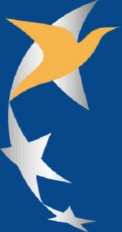Mon, Sep 21, 2009
New Position Based On Stakeholders' Contributions
 The Management Board of the
European Aviation Safety Agency (EASA) Tuesday welcomed a common
position of EASA and the European Commission (EC) setting out
priorities for the extension of the Agency's responsibilities in
the areas of Flight Crew Licensing, Air Operations and Third
Country Operators ("first extension") as well as in the field of
Air Traffic Management/Navigation Services and Aerodromes ("second
extension").
The Management Board of the
European Aviation Safety Agency (EASA) Tuesday welcomed a common
position of EASA and the European Commission (EC) setting out
priorities for the extension of the Agency's responsibilities in
the areas of Flight Crew Licensing, Air Operations and Third
Country Operators ("first extension") as well as in the field of
Air Traffic Management/Navigation Services and Aerodromes ("second
extension").
Taking into account the comments of airlines, pilots and other
stakeholders in response to EASA's consultation documents ("Notices
of Proposed Amendments"), the joint position intends to amend and
simplify the Agency's initial proposals in a number of areas. "We
have listened to our stakeholders and agreed on an approach which
will allow for a smooth transition", said Patrick Goudou, the
Agency's Executive Director at Tuessay's Management Board meeting.
"Our proposals will be based on existing legislation and safety
standards". Zoltan Kazatsay, Deputy Director-General for Energy and
Transport of the European Commission said: "Changes to existing
rules will only be proposed if justified by safety
considerations".
Michael Smethers, Chair of the Management Board, commended the
Agency and the Commission for their work. "These proposals
represent a constructive response to the issues raised by
stakeholders, and a sound platform on which EASA can prepare to
carry out its new functions", he said. The Management Board
acknowledged a change in the structure of the Air Operations
proposal, which will include dedicated sections for different types
of operation. It also agreed to a phased publication of Agency
proposals, giving priority to Flight Crew Licensing and Commercial
Air Transport (CAT). The CAT proposal will contain specific
provisions for Flight Time Limitations based on Regulation
1899/2006 ("EU-OPS", Subpart Q), operational experience and current
research and will take into account initiatives by the
International Civil Aviation Organization (ICAO) in the area of
Fatigue Risk Management Systems. Transition phases of 1-2 years
will allow Member States and industry to better adapt to the new
rules. The Agency is also committed to a streamlined comment review
process which highlights the changes in the regulatory text and
guidance material.

All EASA opinions related to the first extension will be
published by mid-2011 so that the respective Commission regulations
can be adopted by April 2012. The implementing rules for the second
extension shall be adopted by the end of 2012 (Air Traffic
Management/Navigation Services) and 2013 (Aerodromes) respectively.
The report "Joint Commission and EASA approach for rulemaking in
the extension of Community competences" is available online.
More News
Aero Linx: Transport Canada We are a federal institution, leading the Transport Canada portfolio and working with our partners. Transport Canada is responsible for transportation p>[...]
Gross Navigation Error (GNE) A lateral deviation from a cleared track, normally in excess of 25 Nautical Miles (NM). More stringent standards (for example, 10NM in some parts of th>[...]
From AirVenture 2017 (YouTube Edition): Flight-Proven Booster On Display At AirVenture… EAA AirVenture Oshkosh is known primarily as a celebration of experimental and amateu>[...]
Aircraft Parachute System (CAPS) Was Deployed About 293 Ft Above Ground Level, Which Was Too Low To Allow For Full Deployment Of The Parachute System Analysis: The day before the a>[...]
Also: 48th Annual Air Race Classic, Hot Air Balloon Fire, FAA v Banning 100LL, Complete Remote Pilot The news Piper PA-18 Super Cub owners have been waiting for has finally arrived>[...]
 ANN's Daily Aero-Linx (06.29.25)
ANN's Daily Aero-Linx (06.29.25) ANN's Daily Aero-Term (06.29.25): Gross Navigation Error (GNE)
ANN's Daily Aero-Term (06.29.25): Gross Navigation Error (GNE) Classic Aero-TV: Anticipating Futurespace - Blue Origin Visits Airventure 2017
Classic Aero-TV: Anticipating Futurespace - Blue Origin Visits Airventure 2017 NTSB Final Report: Cirrus SR22
NTSB Final Report: Cirrus SR22 Airborne Affordable Flyers 06.26.25: PA18 Upgrades, Delta Force, Rhinebeck
Airborne Affordable Flyers 06.26.25: PA18 Upgrades, Delta Force, Rhinebeck




